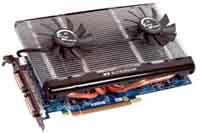 by congo » Tue Jun 20, 2006 3:29 am
by congo » Tue Jun 20, 2006 3:29 am
Hi Caveman,
Hard disk imaging (ghosting), backup and restore can be a time consuming process, but once the image is made you can use it over and over again.
Keep in mind that you can only restore the original image you made, and you lose your data that was on the disk when the error occurred, unless you are able to recover that data before you restore the image to your drive.
I believe it makes more sense to make regular backups of your important data, and if you use a drive imaging tool, you must understand that the image you recreate is the exact image of the drive when you made the image. That image should ideally be made after you get everything set up just the way you want it to restore again. The trick is in getting it right to begin with.
Drive images are best saved onto some fast media like a hard drive or hard drive partition. The process will be much faster than using removable media like DVD's.
Even so, the time it takes to do all this imaging and restoring, and then getting everything up to date, is comparable to just re-installing from scratch in my opinion.
There is a backup facility, built into windows I believe, that will backup your data depending on what you select for backup and when you schedule those backups to occur, many people schedule these backups nightly. I would advise backing up to a seperate hard disk for extra security in case of a total hard disk failure.
Backing up to a second partition on the same hard drive is just fine, but if the main hard drive completely fails, you lose everything, so it's a bit of a risk.
Personally, I prefer to manually backup my data.
I always have an extra hard drive for my data, which includes all my photos, programs, projects, FS downloads and games etc.
When I do important work, I regularly back up the data to the extra hard disk, otherwise I just copy the contents of my main hard disk, (in my case it's a RAID0 array, not just a single hard disk), straight onto my backup hard disk for safekeeping.
This sounds easy but as with everything, there is a catch......
If you try to copy everything on your main hard disk to another hard disk, or to another hard disk partition on the same drive, you will get errors as some windows op sys files will not copy as they are is use. The copy will fail and you have no idea what you copied and what you didn't.
You can do one of 2 things to overcome this limitation.
First, you can select the files/folders you wish to backup manually, and copy them at your own pace, or use software to automate the process.
Secondly, and to my mind, preferably, purchase a second hard drive, partition 40gb for Windows, and then install WinXP on that first partition, get it up and running like you normally would, this is just like having a second PC handy, and all you need to use it is a bios change or a boot select option.
Once Windows is up and running on the second hard drive, partition the remaining unused area of the new hard disk (if you haven't already done that) and use that space for your backups.
Now, from this second "Windows", you can easily copy the entire contents of the original main hard disk to the backup partition on your new second drive. Open the main hard disk in explorer, (from the second Hard drive's Win XP), and select the recycler and System Volume Information folders, go up to the edit menu, select "invert selection" and copy and paste the highlighted remaining data to your backup partition
Last edited by
congo on Thu Jun 22, 2006 2:41 am, edited 1 time in total.

Mainboard: Asus P5K-Premium, CPU=Intel E6850 @ x8x450fsb 3.6ghz, RAM: 4gb PC8500 Team Dark, Video: NV8800GT, HDD: 2x1Tb Samsung F3 RAID-0 + 1Tb F3, PSU: Antec 550 Basiq, OS: Win7x64, Display: 24&




 Mainboard: Asus P5K-Premium, CPU=Intel E6850 @ x8x450fsb 3.6ghz, RAM: 4gb PC8500 Team Dark, Video: NV8800GT, HDD: 2x1Tb Samsung F3 RAID-0 + 1Tb F3, PSU: Antec 550 Basiq, OS: Win7x64, Display: 24&
Mainboard: Asus P5K-Premium, CPU=Intel E6850 @ x8x450fsb 3.6ghz, RAM: 4gb PC8500 Team Dark, Video: NV8800GT, HDD: 2x1Tb Samsung F3 RAID-0 + 1Tb F3, PSU: Antec 550 Basiq, OS: Win7x64, Display: 24&
